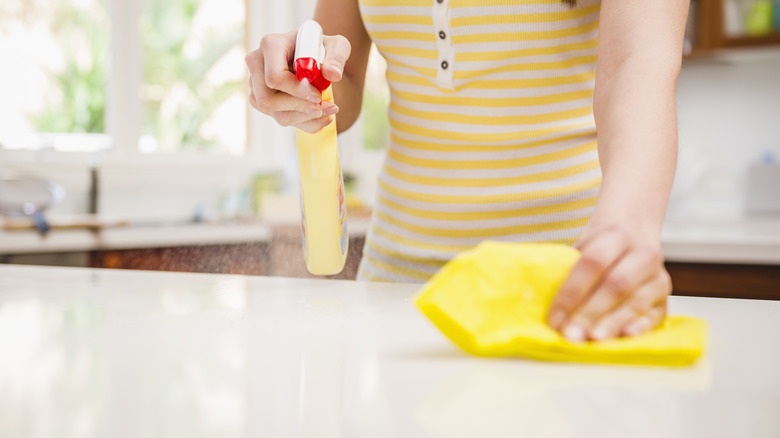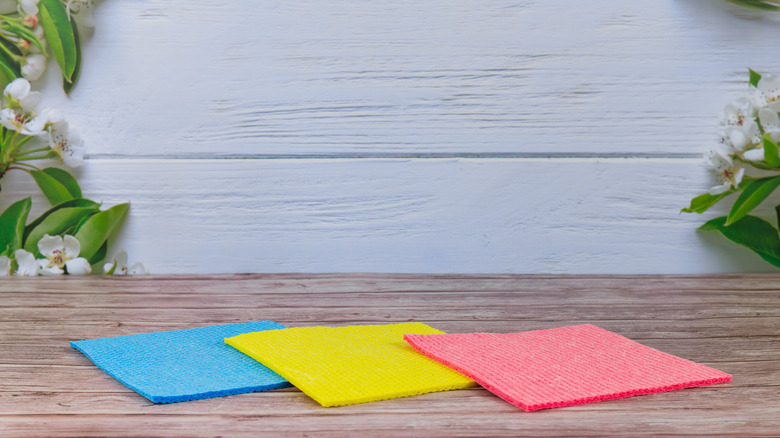The Best Way To Wash Your Swedish Dishcloths
Those who consider themselves part of natural or eco-friendly living circles are likely already acquainted with Swedish dishcloths. Made from cellulose (plant fibers) and cotton, these versatile cloths are renowned for being a cost-effective alternative to paper towels and kitchen sponges thanks to their superior absorbency and long-lasting design. However, one common challenge facing reusable cleaning and wiping tools like Swedish dishcloths is the question of how to sanitize them. After all, no one wants to be wiping their kitchen table with a bacteria-laden cloth, no matter how environmentally conscious it is.
Keeping your Swedish dishcloths free from bacteria, sliminess, and odors is easy to do. For routine washing, rinse and wring out the dishcloth when you've finished using it, whether that's for an hour or for the day. If there's still some lingering debris, add a small amount of dish soap, lather up, and rinse again. Once every few days (depending on how clean you like to keep your dishcloths), it's smart to clean your dishcloths more thoroughly in the washing machine. Run the load without fabric softener, as this will make them less absorbent. After the cycle is done, pull them out of the washer to air dry rather than using the dryer, which can shrink the cloths and cause damage. Finally, every once in a while (weekly can be wise if you're worried about bacteria growth), throw your evenly dampened and wrung out dishcloth into the microwave and let it cook for one minute. This will disinfect it, ensuring that any germs are stopped in their tracks.
Why Swedish dishcloths are so easy to keep clean
While it's true that Swedish dishcloths are sponge-like in their texture when wet, they actually have a number of unique benefits, intrinsic to their materials and design, that make them cleaner overall and more easy to refresh than your smelly kitchen sponge. For starters, the fabric that Swedish dishcloths are made from is designed to naturally dry quickly. Anyone who knows anything about bacteria growth knows that it cannot grow or reproduce in dry conditions. Since Swedish dishcloths are designed to dry in a couple of hours, they will not exhibit the levels of bacteria growth that perpetually damp sponges usually do. And, because Swedish dishcloths are so thin, the chances of them beginning to foster a mildew smell is minimal.
If you do notice that yours are beginning to develop that terrible stench, it's time to toss that individual cloth and take your regular maintenance of future Swedish dishcloths more seriously. While it might be tempting to pull out the big guns, you should never use bleach to clean them as the harsh chemicals can break down the fibers making up the cloth. For a little extra stench-eliminating power, you can soak your Swedish dishcloth in a mixture of 1 cup vinegar and 3 cups water for 15 minutes, then rinse, wring, and dry flat on your counter. Keeping your home clean with the help of Swedish dishcloths is made all the sweeter by the knowledge that maintaining the cleanliness of the cloths is so simple and straightforward.

